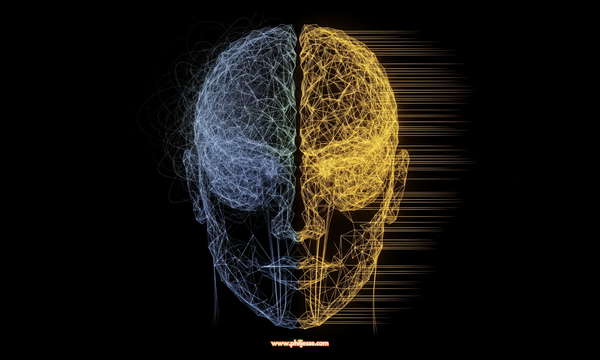The Momentum Method: A Simple, Human-Centric Framework for Leading Fluent Change
In a world where most change initiatives fail, The Momentum Method offers a simple, human-centric alternative. Learn the four phases—Discover, Engage, Align, Improve—that form a powerful framework for driving successful, sustainable change in any team or organisation.

Change is the only constant, yet successful change remains agonisingly elusive. We have all been there: the ambitious project, the bold new strategy, the well-intentioned reorganisation. It launches with a flurry of slideshows and corporate enthusiasm, only to slowly grind to a halt, suffocated by the silent friction of resistance, misalignment, and misunderstanding.
Most change initiatives don’t fail because the ideas are flawed. They fail because of people. They fail because of a fundamental disconnect between the logic of the spreadsheet and the complex, emotional reality of the human beings expected to execute it. They fail when communication is a broadcast, not a conversation; when alignment is assumed, not meticulously built.
But what if there was a better way? A way to lead change that is less about force and more about flow?
This article introduces a simple, elegant, and profoundly human-centric framework designed for the complexities of the modern workplace. It’s called The Momentum Method. It is a four-phase process—Discover, Engage, Align, Improve—that prioritises emotional intelligence and communication to create unstoppable, positive momentum.
Before we proceed, I need to state with clarity and gratitude that this powerful method was not conceived by me. It is the creation of my wife, an exceptional leader whose professional excellence is matched only by her profound emotional intelligence. For years, she has successfully implemented this framework, proving its efficacy time and again. I am simply the writer, honoured to be bringing the voice of this transformative idea to a wider audience. It is a testament to the fact that while technical skills can be learned, it is the mastery of the human element that truly distinguishes great leaders and successful outcomes.
Part 1: The Human Problem at the Heart of Failed Change
At its core, organisational change is not a technical problem; it is an adaptive, human challenge. We can design the most sophisticated project plans and the most intricate workflows, but they are rendered meaningless if the people involved feel unheard, uncertain, or uninvested.
The number one reason processes fail is poor communication. This isn't just about a lack of emails or meetings; it’s a failure to create psychological safety. It’s the absence of a space where people can voice concerns without fear, ask clarifying questions without feeling incompetent, and contribute ideas without being dismissed. When this gap exists, resistance isn't an act of defiance—it's a natural symptom of uncertainty and a lack of connection to the mission.
The Momentum Method was created specifically to close this gap. It operates on a simple premise: clarity precedes action. It is a framework for communication first. It systematically builds a foundation of shared understanding, ensuring that by the time you get to the ‘what’, everyone is deeply invested in the ‘why’. This is change that doesn't just happen to people; it happens with them.
Part 2: The Four Phases of The Momentum Method
The framework unfolds over four distinct, yet interconnected, phases. Each stage is designed to build upon the last, creating a solid foundation for sustainable transformation.
Phase 1: Discover – The Foundation of Clarity

The journey of any meaningful change begins not with an answer, but with a question. The Discover phase is a dedicated period of deep, unbiased exploration. It is the art of asking the right questions—Who, What, Why, Where, When, and How—to build a comprehensive, 360-degree view of the landscape.
What is the Discover Phase?
This is the antithesis of the top-down directive. It’s a process of genuine inquiry, whether through one-on-one discovery calls, team workshops, or data analysis. It's about gathering information without judgement, seeking to understand the explicit goals (what’s written in the project charter) and, more importantly, the implicit realities (the anxieties, hopes, and hidden obstacles that exist within the team). The timeframe is fluid; discovery lasts as long as it takes to achieve true clarity.
The Leader’s Role: Fostering Psychological Safety
A leader's most critical function in this phase is to be the chief curator of psychological safety. It’s about creating an environment where people feel secure enough to share the unvarnished truth. This means listening more than speaking, rewarding vulnerability, and demonstrating that every perspective is valued. Without this safety, the discovery phase yields only superficial data, and the entire framework is built on a faulty foundation.
Guiding Questions for Discovery:
- ➡️ What is the clearly defined problem we are trying to solve?
- ➡️ What does success look like, and how will we measure it?
- ➡️ Who are all the stakeholders, and what are their individual perspectives, concerns, and hopes?
- ➡️ What are the unspoken assumptions we are making?
- ➡️ What historical context or past attempts should we be aware of?
Phase 2: Engage – From Information to Interaction

Once a foundation of information is laid, the Engage phase begins. This is where the process moves from passive data gathering to active, collaborative dialogue. Ideas are brought to life, key stakeholders become active participants, and the abstract vision begins to take tangible shape.
What is the Engage Phase?
This is where the insights from the Discover phase are shared, debated, and enriched. It’s a crucial period for identifying Strengths, Weaknesses, Opportunities, and Threats (SWOT) not as a sterile business school exercise, but as a living conversation. It requires excellent communication to ensure that the initial discoveries are built upon, not lost.
The Art of Active Listening and Building Consensus
Engagement is not about telling; it’s about co-creating. This phase is built on the leader's ability to actively listen, synthesise disparate viewpoints, and guide the group towards a shared understanding. It’s about making people feel heard, respected, and integral to the solution. When people are genuinely engaged, they transition from being employees executing a task to being owners of an outcome.
Phase 3: Align – The Architecture of Cohesion

Engagement, without alignment, is just energetic chaos. The Align phase is perhaps the most critical juncture in the entire method. It is the meticulous process of ensuring that people, values, processes, and goals are all pointing in the same direction.
What is the Align Phase?
Alignment is the deliberate creation of cohesion. It’s about moving beyond surface-level agreement—which can be temporary and fragile—to a state of deep, shared commitment. When a team is aligned, there is an implicit understanding of the objectives and a shared definition of success. Resistance and setbacks are minimised because everyone is working from the same set of principles.
Tools for Alignment in a Modern World
Frameworks like OKRs (Objectives and Key Results) are an excellent practical example of alignment in action. They provide a transparent structure for large groups of people to work towards audacious goals. The Momentum Method does not seek to replace such tools; rather, it provides the essential human-centric groundwork that makes them effective. Without the trust built in the Discover and Engage phases, even the best-designed OKRs will fail to inspire. Alignment is the bridge between a great idea and its effective execution.
Phase 4: Improve – The Engine of Evolution

The final phase, Improve, is what makes The Momentum Method a living, breathing system rather than a static, linear project plan. This is the commitment to continuous improvement, iteration, and learning.
What is the Improve Phase?
This is the feedback loop. It’s where the results of the change are measured, analysed, and used to inform the next cycle of discovery. Companies like Amazon, Google, and Tesla have not reached their heights by executing a single perfect plan. They have done so by embedding a set of principles and values that drive them to relentlessly improve their products and services.
Fostering a Culture of Continuous Improvement
This phase is less about a set of actions and more about cultivating a mindset. It’s about celebrating incremental wins, learning from failures without blame, and creating systems for ongoing feedback. When a culture of continuous improvement is established, The Momentum Method ceases to be a process that is "run" on a project; it becomes the default way the organisation operates.
Part 3: The Flywheel Effect: Why The Momentum Method Works

The true power of these four phases is not in their individual execution, but in their cyclical nature. They are not a straight line from A to B. They are a flywheel.
The insights from the Improve phase feed directly into a new, more informed Discover phase. The engagement is deeper the second time around because trust has been built. The alignment is stronger because the shared purpose is clearer. Each rotation of the cycle—Discover, Engage, Align, Improve—builds upon the last, gathering speed and creating a self-reinforcing culture of positive, effective change.
Leading Change in the Age of AI
As technology and AI continue to advance at an exponential rate, it is tempting to search for purely technical solutions to our most complex challenges. But the fundamental truth remains: people are still people. We are driven by emotion, connection, and a desire for meaning.
In this new world, our uniquely human skills—emotional intelligence, empathy, communication, and the ability to inspire and align others—become our most valuable assets. The Momentum Method is a framework for this future. It is a structured approach that honours the human beings who must ultimately embrace, enact, and sustain change. It is a reminder that the most powerful transformations are not driven by the most complex processes, but by the most profound and simple human truths.
The principles discussed are not a substitute for professional advice. Individual results from applying these concepts will vary, as your unique path, choices, and consistent efforts play the most significant role in your experiences. If you require guidance regarding specific personal, financial, medical, or mental health situations, please consult with a qualified professional. Please engage with these ideas responsibly, understanding that you are the architect of your choices and actions.





